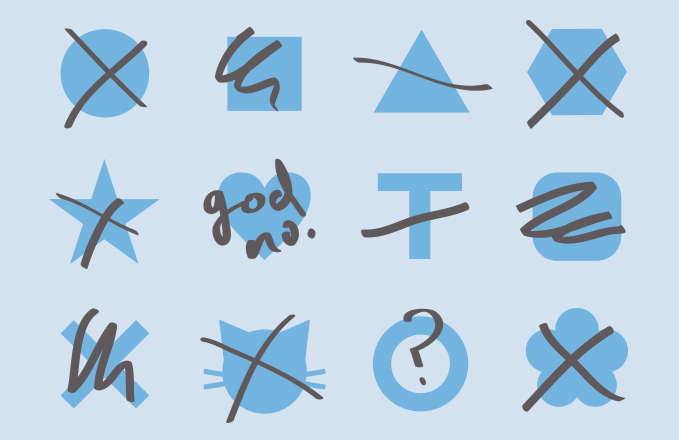
I like working with people who are at the beginning stages of a project. Perhaps they’ve worked with another designer for previous iterations of their brand, or for other product launches, but now they’re ready to start something new with a fresh set of eyes. It’s good when clients have worked with other designers before, because it usually means they’re familiar with the process.
What’s not so good is when a client comes to me mid-project. These are people who have tried developing a brand with another designer (or worse, multiple designers), and they need my help to “finally get it right.” I’ve learned that this is a giant red flag.
I used to be flattered by this kind of challenge. Of course that other designer didn’t get it right, I’d tell myself. Maybe they weren’t as good of a listener as me. Or they were constrained by their own stylistic limitations. Or they were generally half-assed and not as professional as me. The ego-assuaging speculations went on and on.
So I’d say yes to the project and promise to present a first round in less time than I typically require. (If the client has already spun their wheels with another designer, chances are, they’re in a massive hurry.) I’d justify this compromise with illusions that the client would return the favor with high levels of trust and goodwill throughout the process.
In the fantasy version of the story, I proceed to sweep the client off their feet with my exceptional work.
It becomes obvious that the previous designer was a hack, and I’m the true expert who understands the subtlety of their needs.
The fantasy version never happens. Ever. The real version usually goes one of a few ways.
One: they see the first round of work which I believe solidly does what they asked for. They don’t agree, and they bail. Yep, they walk away from the project. Maybe the logos I showed them checked two boxes, but they wanted to check 13. In other words, they wanted the impossible. Off they go to find yet another designer who has the magic touch.
Two: I completely bomb the first presentation. I realize that I didn’t get enough direction from the client on what they actually want, so I try to cobble stuff together based on conversational fragments. I was too busy promising that I’d do better than the last designer to actually draw out substantial guidance during the briefing. Rather than pushing the first presentation back and admitting that I need more time and clarity, I prioritize meeting the deadline and cheery customer service. At this point, the client sees the first round and freaks out. Nothing is right, so they want to bail. But they’ve already committed to the whole project, so we keep going. I do better on the next round, we develop the brand and launch a new website. Sighs of relief resound. But then, I check on the site a few months later and see that it’s been replaced by a new site with a different name. It turns out, they weren’t serious about developing a brand in the first place. They were never fully invested in the process. Of course nothing good is going to come from that.
Three: The client is impressed and excited by the first presentation. They pick a direction to focus on, and I go through several rounds of minor revisions. Just as the project is winding down and I’m seeking final sign off, I stop hearing from them. Then, two weeks after a series of follow up emails, I get a request to explore new logos from scratch. The client can’t make a decision. Even though I’ve shown them something they like, they’re afraid to commit to it. They want an endless stream of options to choose from until their elusive gut barometer finally lights up at the perfect logo. For this kind of client, I tell them that 99Designs is probably a better fit.
The fact is, I understand how any client might be nervous and unsure at the beginning stages of a project. There’s usually a lot of money and emotional energy at stake. I know the creative process intimately because I’m immersed in it every day. But this isn’t the case with many people. Part of my job is to inform clients about what to expect, so that no one wastes time or money on a mismatched partnership.
When a project doesn’t end well, I take a long hard look at what I could have done differently. I can usually spot room for improvement at every stage. But if a client isn’t willing to open up and trust that the process will eventually lead to something great, I’m not the right designer for them.
I know this now. I also know that I should give fellow designers the benefit of the doubt. Every once in a while, it’s not us, it’s them.
